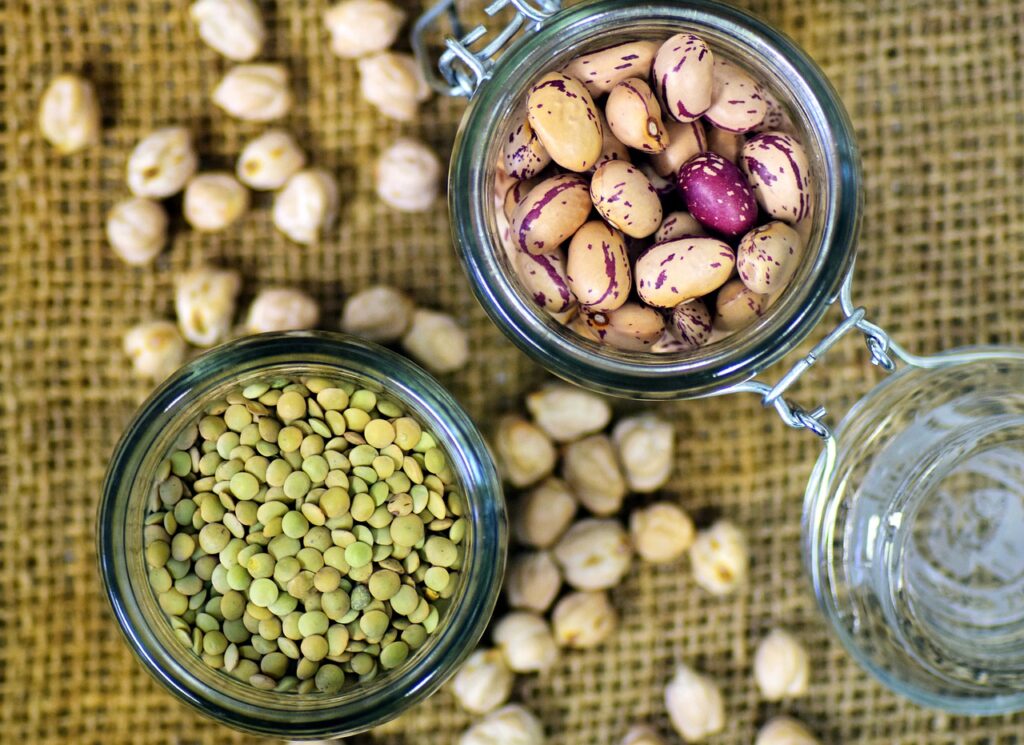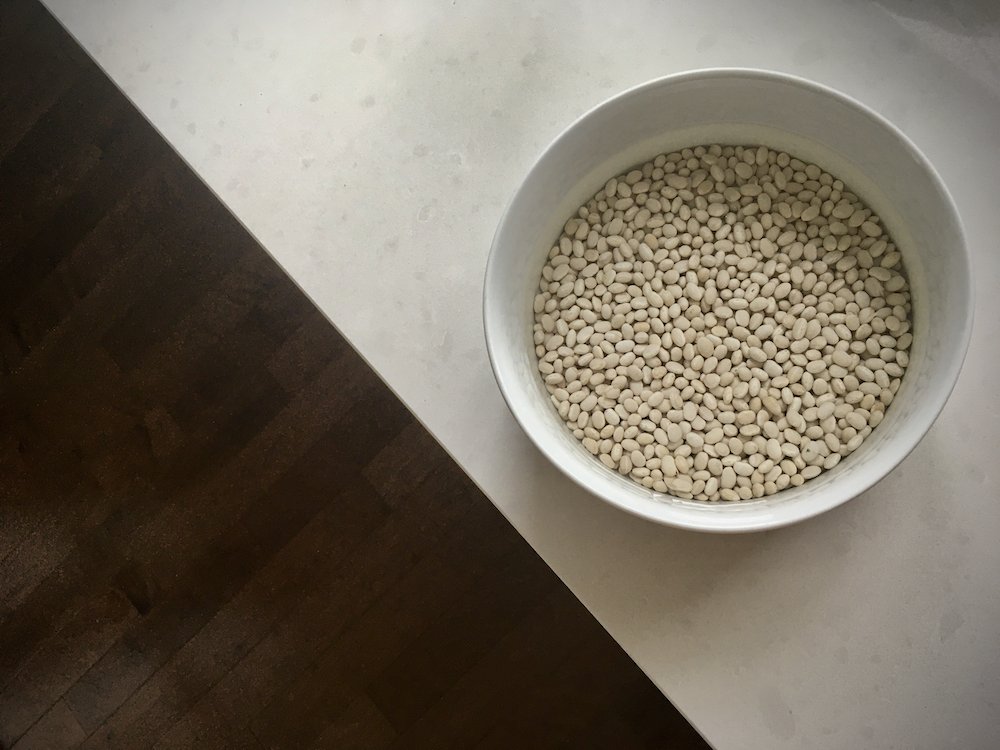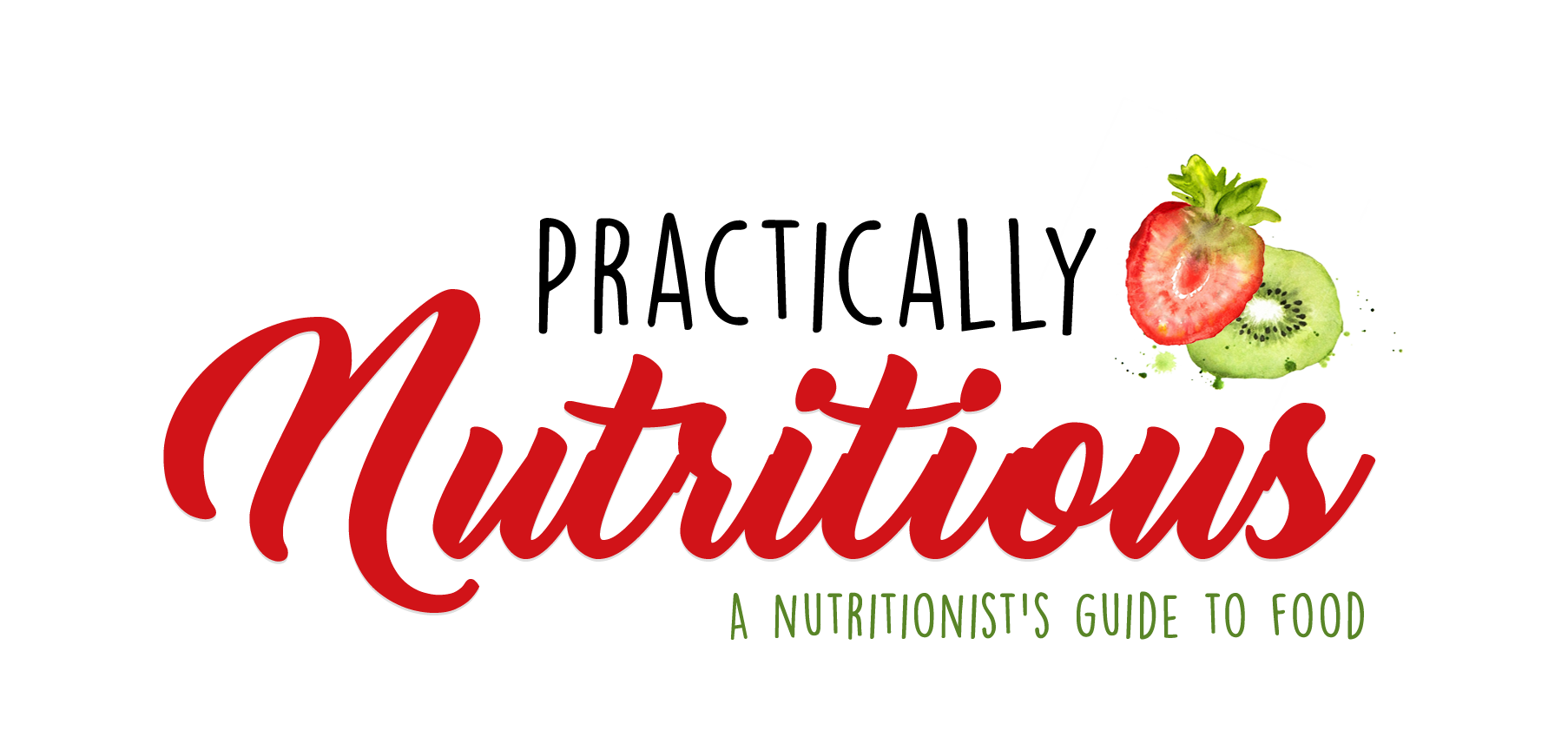I LOVE beans. They are the most amazing and versatile food. Not convinced? Let’s see what we can do about that.

What are beans?
Beans are a type of legume. Legumes are a whole family of plants that have fruits in pods, including foods like beans, peas, chickpeas, lentils, and even peanuts. For the sake of simplicity, when I write “beans”, what I mean is beans, chickpeas, and lentils, because these are the legumes most commonly consumed, and they have similar nutrition profiles.
Why YOU should eat lots of beans
Beans have a lot going for them. For starters, they are fairly cheap to buy, much cheaper than other protein sources. They are also a lot more environmentally friendly because they require less energy to grow than, say, animal products. Lastly, they are super healthy! Beans are an excellent source of many nutrients:
- Fibre: depending on the type, beans provide up to 9 grams of fibre per ½ cup, which translates to about a third of most people’s daily requirements. Considering most Canadians are not getting enough fibre, beans are a nice addition to your diet to increase your fibre intake. Fibre keeps you regular, promotes gut health, keeps you full after a meal, and can help control blood sugar and cholesterol.
- Protein: a ½ cup of beans provides 7 to 10 grams of protein, which makes beans a good source of plant-based protein for those interested in eating less animal products. But keep in mind that the protein in beans is incomplete because it does not contain all of the amino acids the body needs. Luckily, beans and grains put together do contain all of the amino acids we need. So if you are planning on eating mostly vegetarian foods, consider pairing your beans with a grain like rice or a grain product like bread. The recipes below have both beans and grains in them for this reason.
- Folate and other micronutrients: beans are rich in folate, which is important for the production of red blood cells and is especially important for an embryo’s development during pregnancy. Beans are also a great source of some B vitamins, magnesium, iron, potassium, and antioxidants, all of which are essential nutrients our bodies need.
Cooking beans
If you are new to beans you may feel a little confused about cooking them. But don’t fear, I’m here to give you the basics.
Beans can be bought frozen, canned, or dry.
Frozen peas and edamame are pretty popular and have a short cooking time – I recommend following package instructions, but I personally tend to just pop them in the microwave until they are warmed through.
Canned beans can be eaten straight from the can (although most people would probably not choose to do this) or incorporated into any basic recipe without additional cooking.
Dry beans have to be cooked for a fairly long time before they can be eaten. I love using dry beans because they are SO cheap and do not contain added salt. If using dry beans, plan in advance, especially if you plan on pre-soaking them (see below). It’s recommended to cook dry beans at a gentle simmer for a long time, that way they soften but keep their shape.
Tip: when I make soups and stews from dried beans, I either make them in a slow cooker or in the oven. Both options allow you to cook the beans at a low temperature for a long time, with no stirring needed. Take a look at the recipes linked below for some ideas!
Slow cooker bean recipes
Vegetarian Bean and Barley Chili
Do I soak my beans?

I always thought the answer to this was a resounding yes. But my research actually yielded a different answer: if you want to. Soaking dry beans before cooking helps them cook faster and may help get rid of some of their gas-creating tendencies (more on this below). The downside of soaking beans is that you might lose some flavour and nutrients in the soaking water. So really the choice is yours.
I tend to soak large or tough beans like kidney beans and chickpeas, and I skip the soaking for smaller beans like black beans. You do not need to soak lentils.
If you do decide to soak, you have two options:
- Cold soak: cover the beans in cold water for 4-12 hours, drain, and rinse
- Hot soak (also called quick soak): boil the beans in plenty of water, then turn off the stove and leave them in the hot water for 1-2 hours, drain, and rinse
Beans and Flatulence
Some of us avoid beans because of their unpleasant side effect – gas. Why does this happen? There are some types of sugars that we humans can’t digest, so they pass right through to our colon (also called large intestine). The bacteria in our colon can digest these sugars, so they happily feast on them, creating gas in the process. Beans contain a large amount of these undigestible sugars, so they make our gut bacteria very happy, but the people around us less so.
What can you do to prevent gas? Here are some options:
- Pre-soak and rinse the beans to get rid of some of these sugars.
- Cook the beans for a long time at low temperatures, which breaks down the sugars and makes them digestible.
- Introduce beans to your diet slowly. Try adding ¼ cup of beans per day at first, then add more as tolerated.
- Take Beano (or a generic version of it) with your meal, which will prevent gas because it contains an enzyme that digests the sugars for you.
